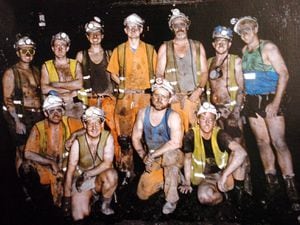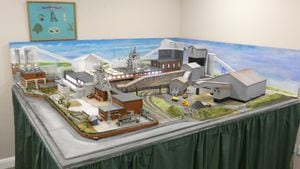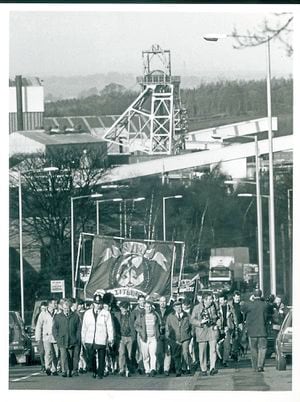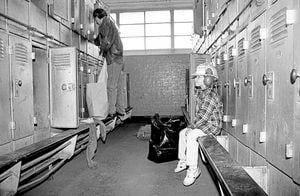Coal heritage runs deep - remembering proud history and demise of Littleton Colliery
In Huntington, built brick by brick from coal, the pit has long gone, yet the pit has survived the pendulum of time.

The black stuff that sustained so many lives in the village – a ribbon of homes stretched between Cannock and Stafford – still stains every street.
It is there, running below the surface. It is an indelible memory of a lost life, a hard, past life. Yet it is still visible, like the thin blue scars that adorned the weathered faces and arms of miners I interviewed all those decades ago.
Littleton Colliery has long gone, yet its name remains on a host of landmarks.
There’s a shrine to the mine at Littleton Lodge Care Home, with detailed scale model of the pit and a National Union of Mineworkers’ banner carried defiantly on the last day of the doomed colliery.

The 150ft pit mound, once an ugly blemish that cast a threatening shadow over homes below, has been transformed into Littleton Leisure Park, the blackened by-product of a decaying industry now disguised by trees. A Flag of St George flies on its pinnacle.
The men of Littleton who laboured like moles in the maze of shafts have long gone or found salaries on the surface. Yet the pride in what they achieved and endured remains.
In a small memorial garden in the heart of the parish, 660 bricks are etched with the names of miners.
Walk past the terraced homes of Monkey Row, built in the early 20th century for pit workers, and you can almost hear the crisp echoes of boots as workers march en masse in sunlight to the darkness of their daily grind.
From my own first footsteps in journalism, in the mid 1970s, through 25 years as editor of local weekly paper the Chase Post, Huntington was my patch.
I was there for Littleton’s pomp – in the early 1980s, 2,000 were employed at the pit. I witnessed the death rattle of its last day.

Scottish pipers played a mournful Littleton lament on the day the colliery died, while workers marched behind them like heroic soldiers returning from war.
It was a funeral march by the remaining 600 strong workforce and those who witnessed it – this writer included – were left with the same sense of loss, anger and injustice that comes with a passing.
In an angry letter to the Chase Post, Huntington Parish Council chairman Jeff Ashley seethed: “The tragedy is that there are millions of tonnes of high quality, mineable and economically viable coal left underground. The question is why?
“The deep mining of coal should have continued in Staffordshire well into the 21st century, instead the effect of Littleton Colliery closing with the loss of 600 miners’ jobs and probably some 1,200 support and service jobs will be devastating to the Cannock area. Mining skills will be lost, young men thrown on the dole during a recession and there will be a huge financial loss to the community.”
Only a year before the axe fell, Littleton had set a new record for mining one million tonnes of coal in the fastest time.

County Council chairman John O’Leary was equally scathing. He said: “This is the saddest day for Staffordshire in my 47 years’ association with the county. It cast a cloud over the whole county. When I first joined the mining industry in Staffordshire in 1948 there were some 22 working coal mines in Cannock alone.
“It is the worst Christmas present that could have been imagined.”





